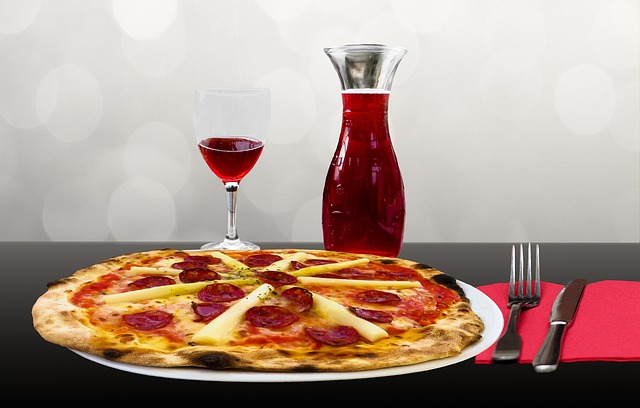
The culinary landscape of Europe is a vibrant tapestry woven with diverse flavors and influences from around the world. Among the myriad of global cuisines that have found a place in European hearts, Italian, Japanese, and American foods stand out as perennial favorites. In this exploration, we delve into the reasons behind the widespread popularity of pizza, ramen, burgers, paella, and moussaka across the continent.
Italian Delights: The Irresistible Allure of Pizza and More
When one thinks of Italian cuisine, the mind inevitably conjures images of aromatic pizzas, hearty pasta dishes, and delectable desserts. Pizza, in particular, has become a culinary icon not just in Italy but throughout Europe. Its origins in Naples date back centuries, but it wasn’t until the 20th century that pizza captured the hearts of people beyond Italy’s borders.

The magic of pizza lies in its simplicity and versatility. A thin crust, a spread of rich tomato sauce, melted cheese, and an array of toppings – these basic elements have evolved into countless variations that cater to diverse tastes. Whether it’s the classic Margherita, the indulgent Quattro Formaggi, or the adventurous BBQ Chicken, pizza offers something for everyone.
Beyond pizza, Italian pasta dishes like spaghetti Bolognese and lasagna have also found a cherished place on European tables. The use of fresh, high-quality ingredients and the emphasis on bold flavors contribute to the enduring popularity of Italian cuisine.
Japanese Culinary Mastery: Ramen as a Gateway to Flavorful Exploration
Japanese cuisine, with its emphasis on precision, aesthetics, and umami, has become a global sensation, captivating palates across Europe. While sushi remains a beloved choice, it’s the humble ramen that has emerged as a symbol of Japanese culinary prowess.
Ramen, a noodle soup dish, has undergone a remarkable transformation from a local comfort food in Japan to an international sensation. Its popularity in Europe can be attributed to its comforting yet complex flavors. The soul-warming broth, perfectly cooked noodles, and a medley of toppings create a harmonious experience that resonates with a wide audience.
The popularity of ramen also reflects a broader trend in European culinary preferences – a growing appreciation for diverse and authentic flavors. Japanese cuisine, with its meticulous preparation and focus on balance, has found favor among those seeking a culinary adventure that goes beyond the familiar.
American Classics: The Burger’s Enduring Allure
American cuisine, often associated with indulgence and innovation, has made an indelible mark on European food culture. The hamburger, a quintessential American creation, has transcended its roots to become a global comfort food, finding a special place in European hearts.
The appeal of the burger lies in its simplicity and adaptability. A juicy patty nestled in a soft bun, adorned with fresh vegetables, condiments, and cheese – the basic structure allows for endless variations. From gourmet creations with exotic toppings to classic cheeseburgers served at roadside diners, the burger caters to a wide spectrum of tastes.
The proliferation of fast-food chains has also contributed to the ubiquity of burgers across Europe. The convenience and affordability of grabbing a burger on the go have made it a popular choice for people with busy lifestyles. However, it’s not just about convenience; the burger’s enduring popularity also stems from its ability to evolve and reinvent itself to meet changing culinary trends.
Paella and Moussaka: Mediterranean and Balkan Treasures

While Italian and Japanese cuisines dominate the European culinary scene, Mediterranean and Balkan flavors have also made a significant impact. Paella, a traditional Spanish dish hailing from Valencia, combines saffron-infused rice with an assortment of seafood, meats, and vegetables. Its rich and aromatic flavors have made it a beloved dish not only in Spain but throughout Europe.
Moussaka, a classic dish from the Balkans, has also found its way onto European tables. Layered with eggplant, minced meat, and béchamel sauce, moussaka offers a hearty and comforting dining experience. Its roots in Greek and Ottoman cuisines contribute to its wide appeal, bridging cultural gaps and creating a shared culinary experience.
Conclusion: A Culinary Tapestry Woven with Global Flavors
In conclusion, the popularity of Italian, Japanese, and American foods in Europe reflects the continent’s openness to diverse culinary experiences. Pizza’s versatility, ramen’s nuanced flavors, burgers’ adaptability, and the rich traditions of paella and moussaka all contribute to a culinary tapestry that is as diverse as the countries that make up Europe.
The cross-cultural exchange of culinary delights not only satisfies taste buds but also fosters a sense of global interconnectedness. As European palates continue to evolve and embrace new flavors, the enduring popularity of these iconic dishes serves as a testament to the universal appeal of good food that transcends borders and brings people together.



